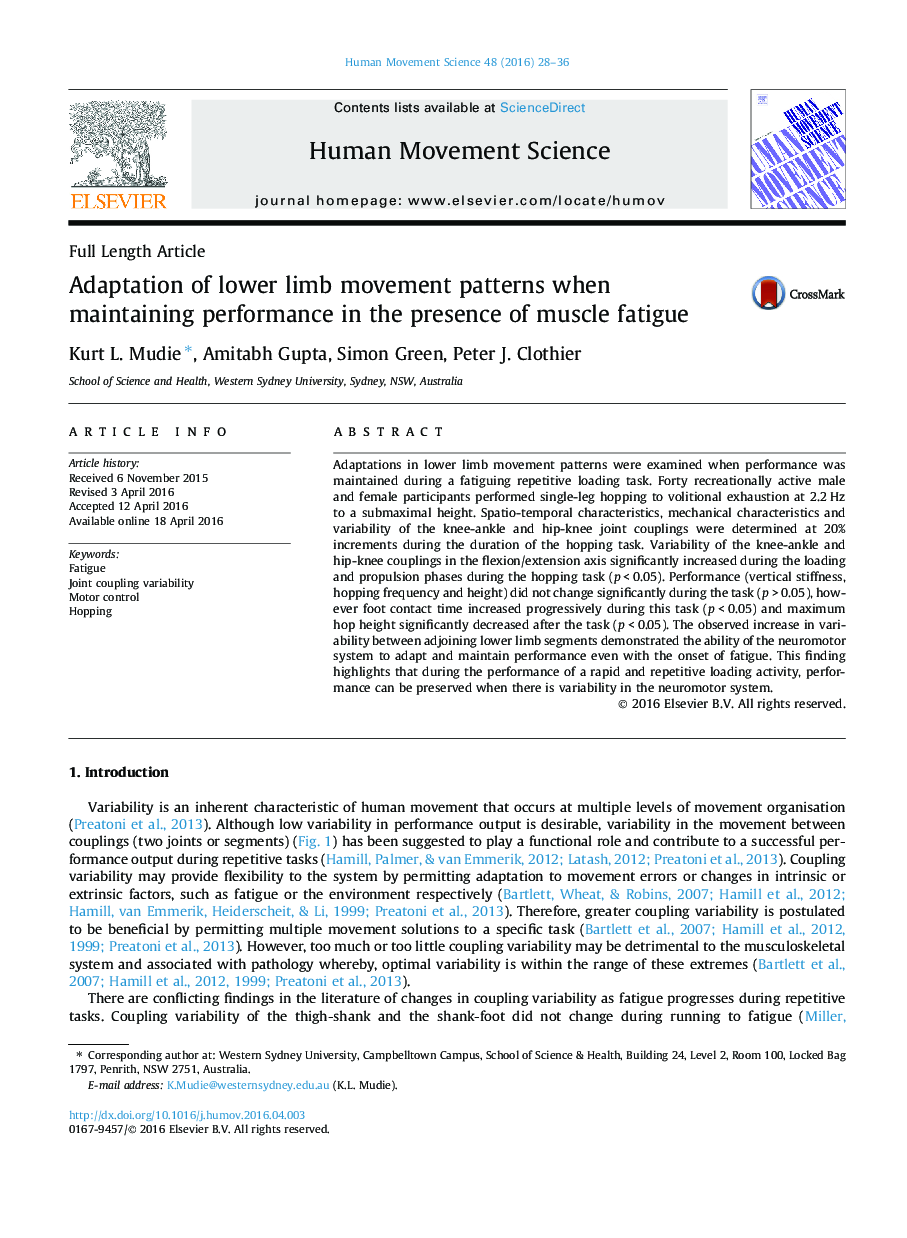| Article ID | Journal | Published Year | Pages | File Type |
|---|---|---|---|---|
| 928182 | Human Movement Science | 2016 | 9 Pages |
•Joint coupling variability increases when maintaining performance under fatigue.•Increased coupling variability may allow greater movement solutions as fatigue progresses.•Performance can be preserved when there is variability in the neuromotor system.
Adaptations in lower limb movement patterns were examined when performance was maintained during a fatiguing repetitive loading task. Forty recreationally active male and female participants performed single-leg hopping to volitional exhaustion at 2.2 Hz to a submaximal height. Spatio-temporal characteristics, mechanical characteristics and variability of the knee-ankle and hip-knee joint couplings were determined at 20% increments during the duration of the hopping task. Variability of the knee-ankle and hip-knee couplings in the flexion/extension axis significantly increased during the loading and propulsion phases during the hopping task (p < 0.05). Performance (vertical stiffness, hopping frequency and height) did not change significantly during the task (p > 0.05), however foot contact time increased progressively during this task (p < 0.05) and maximum hop height significantly decreased after the task (p < 0.05). The observed increase in variability between adjoining lower limb segments demonstrated the ability of the neuromotor system to adapt and maintain performance even with the onset of fatigue. This finding highlights that during the performance of a rapid and repetitive loading activity, performance can be preserved when there is variability in the neuromotor system.
